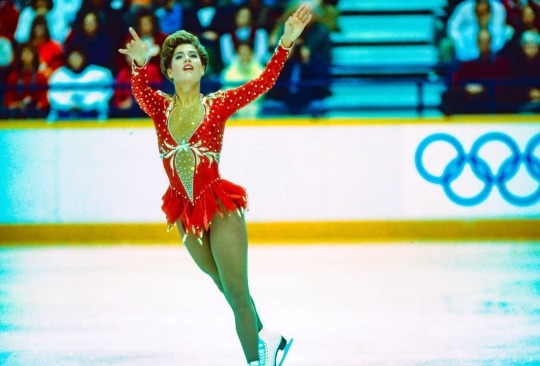#Jill Trenary
Photo
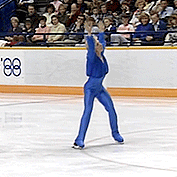
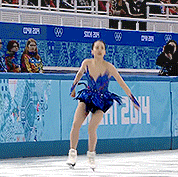

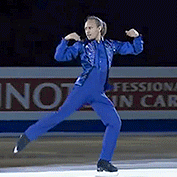
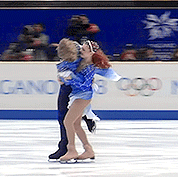
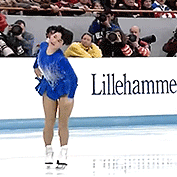



Figure skating in colors: deep indigo
Featuring:
Cameron Medhurst (1998 Olympics FS)
Mao Asada (2014 Olympics FS)
Derrick Delmore ('Not in That Way' EX)
Elladj Balde ('James Brown Medley' EX)
Marina Anissina & Gwendal Peizerat (1998 Olympics FD)
Yuka Sato (1994 Olympics FS)
Jill Trenary (1990 Worlds FS)
Christopher Caluza (2013 4CC FS)
Michael Huth (1988 Olympics SP)
#figure skating#fskateedit#Mao Asada#Christopher Caluza#Anissina/Peizerat#Elladj Balde#Jill Trenary#Yuka Sato#Colors series#gifs
114 notes
·
View notes
Text
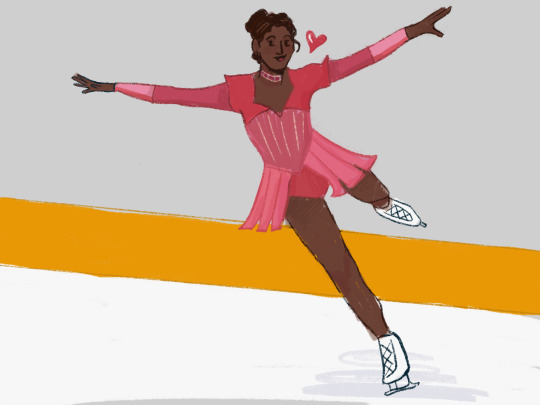

tumblr users meangirls4fetchen and jizuyaa said gretchen as a hockey player and karen as a figure skater and the trajectory of my life changed forever. karen's outfit is based on jill trenary's 1988 winter olympics outfit because awooga.
#mean girls#gretchen wieners#karen shetty#fetchen#u decide whos yelling at gretch in the second panel#obvious answer would be regina#correct answer would be regina
37 notes
·
View notes
Photo

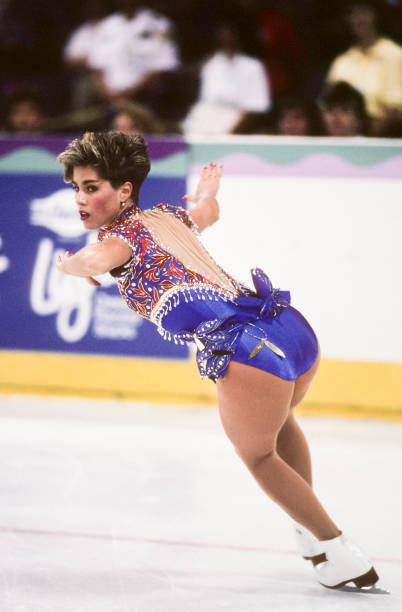
Jill Trenary competing in the 1990 Goodwill Games.
(Source: Getty Images)
38 notes
·
View notes
Text
Jill Trenary, three time US Figure Skating Champion was born in Minnetonka, Minnesota.
0 notes
Text
thinking about it and I'm actually convinced in like 20 years the russian domination in ladies era will be just as forgettable as the usa domination in ladies in the 1990s / early 2000s.
out of all the skaters the only ones you could say had any kind of long lasting legacy are michelle kwan (5 time world champion and 1998 olympic silver and 1992 bronze medallist) and kristi yamaguchi (1992 olympic champion and 2 time world champion).
tonya hardings and nancy kerrigans legacy is the knee breaking scandal and everything that followed in lillehammer though ig they deserve some credit for making the sport famous in the usa (in the 90s)
tara lipinski was basically the og one season champion (won worlds in 1997 + the 1998 Olympics then retired at the ripe old age of 15) and her one thing is annoying the shit out of us on nbc. sarah hughes won the 2002 olympics and then retired after. i dont think ive ever heard of any of her programs. jill trenary won worlds in 1990. have you heard about her? i haven't!
sasha cohen was the last Great American skater and not really a winner (bc america needs winners)
anyway. my point is that in 20/30 years the names alina zagitova or anna shcherbakova or kamila valieva will probably mean absolutely nothing, just three girls who had their heyday in a system that is never satisfied, never respected them, just demanded everything and was always looking to replace them, at the harm of both the russian skaters and the international skaters trying to make it when the odds are stacked against them.
#figure skating#alina zagitova#kamila valieva#michelle kwan#tara lipinski#not tagging everyone i mentioned here#anyway i hope this makes sense i just wanted to rant#anyway#fuck the isu#long post
68 notes
·
View notes
Text
I was watching the 1992 Olympics compulsory dance and there was a fluff about Isabelle Duchesnay and Christopher Dean since the Duchesnays were competing for Olympic gold (they ended up winning silver behind Klimova/Ponomarenko) in their home country of France, Chris was their choreographer, and Isabelle and Chris were married. Then I came across a video from a Torvill/Dean shipper called “I DO NOT LOVE YOU ISABELLE” (see here if you want lmao) and the comments said Chris only marred Isabelle because he was in love with Jayne and heartbroken after Jayne got married and that Jayne was the only one who could handle Chris since she was so laid back. I was like what, but someone on twitter told me this is actually true and he admitted it in their Life Stories special and “he admitted he felt empty because Jayne "wasn’t his" so he rushed into it. Jayne also admitted she always loved him too, but they decided to put it behind them.” So I decided to look up old articles for the drama!
BTW for some background info Jayne married Phil Christensen in 1990 and they’re still married to this day and have two adopted children.
Chris Dean and Isabelle Duchesnay were married from 1991 to 1993 and then divorced because Chris cheated on her with tons of other women (that didn’t include Jayne). Isabelle also said Jayne hated her, was probably in love with Chris, and the only time she ever smiled at her was when she announced she was divorcing Chris:
“Jayne hated me. I think perhaps she was in love with Chris before and never accepted me. The only time she ever smiled at me was when I announced I was divorcing him.” -Isabelle Duchesnay, whose marriage to Dean lasted less than three years (x)
Duchesnay had gone public with complaints that Dean cheated on her with a succession of women and that his on-ice intimacy with Torvill left her feeling excluded. Of Trenary, then dating the legally separated Dean, Duchesnay said, “I feel sorry for her.” (x)
Chris and Jill Trenary (American singles skater who was world champion in 1990) were married from 1994 to 2010 and have two kids. Jill said she didn’t care that Chris cheated on Isabelle because she was madly in love, Jayne’s husband Phil was the best man at their wedding, and Chris said that he was sure that he will spend the rest of his life with Jill:
Dean denied Duchesnay’s accusations, and Trenary didn’t care: she was, she said, “madly in love.” Dean, divorced in December, formally proposed two months later in Norway, moments after he and Torvill won a bronze medal in their Olympic reunion. In a room below the ice rink, he knelt and popped the question. “It was kinda cute,” said Trenary.
And so was she, at the wedding, in her white lace, off-the-shoulder gown. When she walked down the aisle with her father, Robert, a steel-mill owner, Torvill sat in a nearby pew. Her husband, Phil Christensen, a sound engineer, served as best man. And yes, there was ice—at the reception, chilling the champagne Dean raised in toast to his new wife. “There are not many things in life you can be sure of,” he said. “One thing I’m sure about: this is the girl I’m going to spend the rest of my life with. (x)
It didn’t last for the rest of his life and Chris and Jill ended up separating in 2010 due to various reasons, one being that Chris no longer lived full time in Colorado and had to go back to the UK for 6 months when Dancing on Ice started. Chris and Jill were still on good terms though.
Chris started dating Karen Barber (she was an ice dancer who’s partner was Nicky Slater the B.ESP uncle) who was also a Dancing on Ice judge in 2011. They’re still together in 2019. They started dating after Chris separated from Jill and Karen separated from her husband of 21 years, Stephen Pickavance: https://www.dailymail.co.uk/tvshowbiz/article-1347560/amp/Dancing-On-Ices-Karen-Barber-leaves-husband-caught-kissing-Christopher-Dean.html
At first Chris denied the relationship and said they were just sleepovers as friends since they knew each other since they were 16 and competing together. I also found out that Chris, Jayne, and Karen all hate B.ESP uncle Nicky Slater even though he was Karen’s partner:
‘People think if you’re doing that [having sleepovers]: “Well, there must be more to it than that.” But there doesn’t have to be. We [he, Karen and Jayne] have skated together since we were all 16. I’ve known her as long as I’ve known Jayne. When we competed in the British Championships, it was her and Nicky…’
He’s referring to Nicky Slater, the judge who has just been dropped from Dancing On Ice and whose relationship with Karen is, well… let’s say frosty. ‘He was an acquired taste,’ says Chris. ‘People were divided. You like or you don’t like his style.’
Do you? ‘We’ve known him a long time,’ he says diplomatically. So … back to this sleepover.
‘There can be friendships as well,’ 52-year-old Chris insists. ‘Karen will stay with Jayne, too.’ (x)
I also found some things about how Jayne and Chris described their relationship over the years. They didn’t skate together between 1998 (when they stopped competing professionally) and 2006 (the first time they skated together again because of Dancing on Ice) and Chris was depressed when they first stopped skating together, but his relationship with Jayne “lasted longer than any of his marriages”:
He pauses, trying hard to find the right words to explain this thing with Jayne. ‘It’s unique,’ he says. ‘We’re not brother and sister. We’re not husband and wife. But we formed our own friendship that required much more trust than any relationship. We’ve been together longer than both my marriages lasted.’
In the early Nineties, Chris was married briefly to French-Canadian skater Isabelle Duchesnay, who was famously jealous of Jayne, referring to her as the ‘other woman’ in their marriage. Patting Jayne on the leg, Chris says now: ‘This is the one marriage that lasted.’
So, how did he cope with the eight-year separation following their retirement from professional skating in 1998?
Chris says: ‘It was huge. We did our last performance together in Vancouver, but didn’t tell anyone it was our last performance. Only we knew. I came back to England, packed up and went to the U.S. with my then wife, Jill, because we both thought there would be more opportunities for us there.
‘So, I left the country, our partnership had finished and dissolved. I’d moved into a new house and I hadn’t got a job. All of that was in the space of two weeks. I went through a big withdrawal.
‘I had a lot of depression for six months. It’s weird. I thought I was ready for it. I’d psyched myself up and suddenly everything you knew, everything you were, was gone — changed. For six months, I was scratching my head wondering: “What’s life about?” Suddenly there was no routine. No time you had to get up in the morning.’
Jayne sits nodding as she listens to Chris. ‘I remember looking forward to it,’ she says. ‘I didn’t have to get up early. I didn’t have to get up at a certain time. But the loss of routine was tough. We chatted on the phone pretty much every day. Then Dancing On Ice came up. For me, the first performance we did on the first series was frightening. (x)
There’s also this quote from 1995 about how they were upset they kept being asked about a documentary clip filmed between 1994 Euros and 1994 Olympics where Chris “gleefully” makes Jayne cry in practice, but at least people stopped asking if they were in love because of it:
Their aura of invincibility had therefore been shattered, and within a few weeks their much-written-about "love affair on ice" was also dented by a television documentary which gleefully showed Dean reducing his partner to tears during practice.
"At least it stopped people asking us if we have been in love for the past 10 years," Torvill said. "It was a bit mean of the director to do this. We had this nice image, and he clearly wanted to ruin it by making out we were at each other's throats every day."
The "nasty and ruthless" Dean cuts in. "Most of the aggressiveness shown in the film took place in between the Europeans and the Olympics, when the pressure was on, and our moods, because we had seen the writing on the wall, were not good. The truth is that we've been doing this for 20 years, and there's no way either Jayne or I could have stood it for so long if I'd always carried on like that. People still approach me and say that I was mean to Jayne, but it's normally tongue in cheek. At least it showed the reality of what we do to the public." (x)
#figure skating#ice dance#ice dancing#fskate#fs#ice skating#i love reading about ice dance drama#it's so entertaining
147 notes
·
View notes
Text
Olympic Ice Dancing Champions Marriage Facts
Time to spill some more tea!
Let's start from the beginning...
Lyudmila Pakhomova and Aleksandr Gorshkov - 1976 Olympic Ice Dance Champions
MARRIED
Natalia Linichuk and Gennadi Karponosov - 1980 Olympic Ice Dance Champions
MARRIED
Jayne Torvill and Christopher Dean - 1984 Olympic Ice Dance Champions
Torvill — married to non-skater
Dean — formerly married to ice dancer Isabelle Duchesnay, formerly married to skater Jill Trenary
Natalia Bestemianova and Andrei Bukin - 1988 Olympic Ice Dance Champions
Bestemianova — married to skater Igor Bobrin
Bukin — formerly married to former ice dancing partner Olga Abankina, current partner is former ice dancer Elena Vasiuk (I'm considering this a de facto marriage in my statistics, okay)
Marina Klimova and Sergei Ponomarenko - 1992 Olympic Ice Dance Champions
MARRIED
Oksana Grishuk and Evgeny Platov - 1994 and 1998 Olympic Ice Dance Champions
Grishuk — no records of marriage or de facto relationships
Platov — formerly married to skater Maria Anikova
Marina Anissina and Gwendal Peizerat - 2002 Olympic Ice Dance Champions
Anissina — married to non-skater
Peizerat — married to non-skater (possibly? Unclear.)
Tatiana Navka and Roman Kostomarov - 2006 Olympic Ice Dance Champions
Navka — formerly married to ice dancer Alexander Zhulin, married to non-skater
Kostomarov — formerly married to skater Julia Lautowa, married to ice dancer Oksana Domnina
Tessa Virtue and Scott Moir - 2010 and 2018 Olympic Ice Dance Champions
Who TF knows?
Meryl Davis and Charlie White - 2014 Olympic Ice Dance ‘Champions’
Davis — currently engaged to skater and ice dancer Fedor Andreev (I'm considering this as a de facto marriage in my statistics)
White — married to ice dancer Tanith Belbin
Statistical analysis time!
Note: Tessa and Scott will not be included in this statistical analysis as they are technically the only ones not married or in a de facto relationship (apart from one other) and because the whole point of this statistical analysis is that it can eventually be applied to their situation.
Olympic Ice Dance Champion teams married to partners: 3/9, 33.33%
Olympic Ice Dance Champions married to other ice dancers (including partners): 10/18, 55.56%
And with former marriages included: 12/18, 66.67%
Olympic Ice Dance Champions married to other ice dancers or skaters (including partners): 11/18, 61.1%
With former marriages included: 14/18, 77.78%
Summary
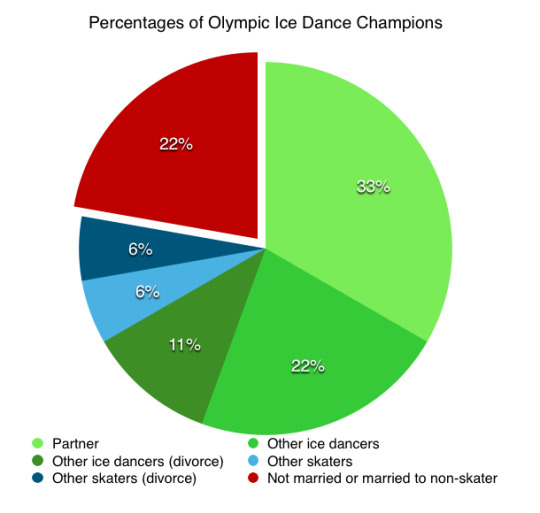
1/3 of other (non-V/M) Olympic Ice Dance champions have married their partners
77.78% of other Olympic Ice Dance Champions went on to marry their partners, or other skaters or ice dancers
This means that other Ice Dance Olympic Champions were over 1.5 times more likely marry a fellow skater than marry a non-skater or not marry at all
Take with this what you will and please share! I spent a long time (over 2 hours) on this!
#virtue moir#olympics#tessa and scott#torvill and dean#tessa virtue#scott moir#Meryl Davis#Charlie White#you’ll notice that none of the ones who have married their partners have divorced#so statistically VM are in the right boat if they...#i mean sjkhskh it’s only statistics what can i say#please say you noticed how i went ‘champions’
131 notes
·
View notes
Video
youtube
This is Jill Trenary. The other day the subject of second jumps in combinations were being talked about. Because of the landing edge the second jump is a toe loop or loop unless there is a half loop in between. Here is the exception to the rule though. Jill had a trademark combo that I don't think anyone else could do. A one foot axel into a triple salcow. She does it in this program.
4 notes
·
View notes
Text



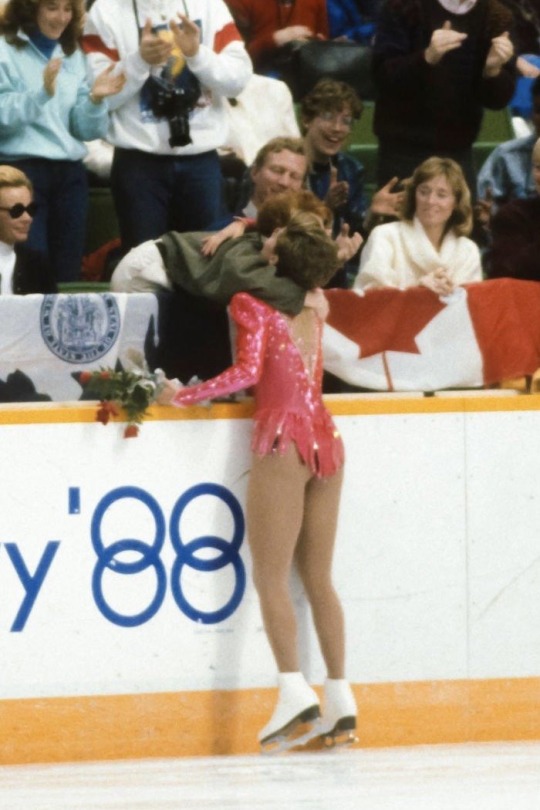
Linda Fratianne
Tonya Harding
Nancy Kerrigan
Jill Trenary
53 notes
·
View notes
Text
Fun With Jump Arm Variations
When jumping, different skaters put their arms in different places, but generally they are pressed flat against the torso, especially on higher-revolution jumps. This compressed shape increases the skater’s rotational speed, which is important for attempting triples and quads.
But as anyone who has watched much skating has seen, you can jump with your arms in different positions, too. There are two main arm variations you will see in modern skating programs:
One arm above the head - these are nicknamed ‘tanos’ after Brian Boitano, who did not invent but did popularize the variation. Ones where the arm is bent a lot may be derisively nicknamed ‘helicopter tanos’, as some fans don’t like how they look. (Brian Boitano 1988 Olympics SP, Brian Orser 1988 Olympics SP, Petra Burka 1965 FS, Wendy Burge 1976 Olympics FS, Ekaterina Kurakova 2022 Euros FS)


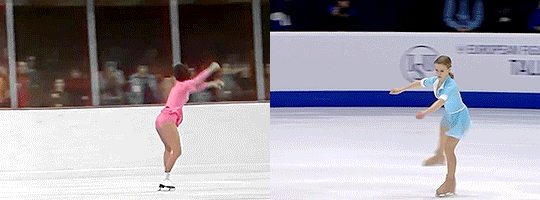
Two arms above the head - these are nicknamed ‘rippons’ after Adam Rippon, who also did not invent them but popularized them when he started doing it on his lutz. (He did tanos on it for a while, but then started using both arms when he trained with Brian Orser, because he felt bad doing ‘tanos’ in front of Orser, who famously took silver behind Boitano at the Olympics.) (Adam Rippon 2016 GP France FS, Midori Ito 1988 Olympics SP, Ting Cui 2018 JGP Ostrava SP, Sihyeong Lee 2021 Nebelhorn FS)


However, there are also other arm variations. These are all rare nowadays, although if you watch older programs, you are more likely to spot a variation that’s not a tano or rippon. Ones I’ve seen include:
Hands on hips - these used to be much more popular back in the day but have fallen out of fashion. I would guess it’s because they slow down rotational speed too much, as every one I have seen is a double except this one by Michael Chack, but I don’t know for sure. (Jill Trenary 1990 Worlds FS, Michael Chack 1992 USNats FS, Rory Flack 1988 USNats SP, Tonia Kwiatkowski 1988 USNats SP, Midori Ito 1987 Worlds SP, Anna Kondrashova 1988 Olympics SP, Yuzuru Hanyu 2010 JPNats FS)



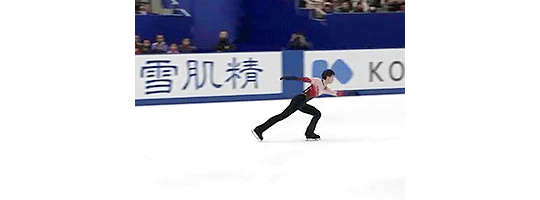
Helicopter arms - this one has been used as a warm-up by Yuzuru Hanyu, and I’ve spotted it in competitions a couple of times with single and double jumps (Rory Flack 1994 US Open Artistic Program, Yuzuru Hanyu 2012 Finlandia Trophy SP warmup)

Arms behind back - I’ve only seen this one performed by Jason Brown in his Riverdance program, where depending on the event he placed either one or both arms behind his back during the second jump of this combo (2013 SA FS, 2014 Nats FS)

Arm switching midair - I’ve only seen this one in this lovely axel variation by John Curry (1976 Olympic SP)
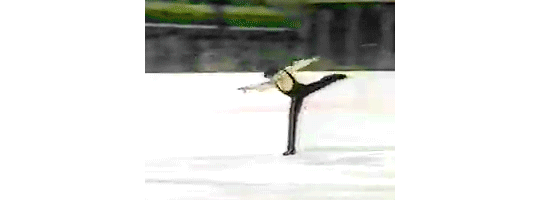
Hands by the head - I believe I may have seen this used by at least one other skater, but the only example I have at hand is this one by Nancy Kerrigan (1990 Goodwill Games SP)

Beginning in 2009, ‘varied position in the air’ became a positive GOE bullet point for jumps. This was because they are supposed to add to the difficulty of a jump, although I’ve seen arguments back and forth from skaters about how true that is for some arm positions (and even if which arm is raised makes a difference for tanos). Years later, they exploded in popularity, particularly in the women’s competition. The trend had its beginning around 2014 or so; the previous season, junior World medalists Evgenia Medvedeva and Serafima Sakhanovich were given programs constructed to include raised arms on a couple of jumps, which wasn’t too unusual, but in 2014, their programs contained many more of them. Medvedeva would go on to dominate the senior circuit for several years and notably used raised arms on most of her jumps during that time, which started the trend in earnest among other skaters.
This GOE bullet point was removed for the 2018-2019 season. But if arm variations no longer get that bit of GOE, why do we still see them so often? There are probably a few reasons:
Skaters who trained them for GOE a few years ago got used to doing them that way and don’t want to mess with their muscle memory
They can add to a program aesthetically
Skaters and their teams may still hope to impress the judges by using them
Skaters have said that rippons help straighten their jump axis
I’ve also seen speculation that rippons can be used to help muscle jumps using the upper body in some cases
I would also like to shout out arm variations on jump exits that aren’t the standard check-out position. These aren’t as common as mid-air variations nowadays and rarely get talked about as their own thing - probably in part because they were never a GOE bullet - but they can add difficulty to the exit as well as give a nice choreographic touch to a program. You can see a few in the above gifs, but here’s a few more:

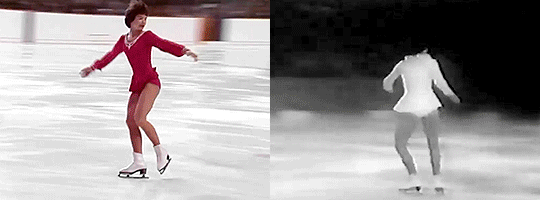


(Petra Burka 1965 Worlds FS, Yuzuru Hanyu 2021 “White Nights” EX, Anett Pötzsch 1976 Olympics FS, Hana Mašková 1968 Worlds FS, Claudia Kristofics-Binder 1976 Olympics FS, Brian Boitano 1988 Olympics SP, Vladimir Kovalyov 1976 Olympics SP)
#figure skating#fskateedit#fs history#Yuzuru Hanyu#Midori Ito#Brian Orser#Brian Boitano#Jason Brown#John Curry#Adam Rippon#Rory Flack#Ekaterina Kurakova#gifs#I went kind of crazy on the gifs here#long post
194 notes
·
View notes
Text

Released in 2005, this series covers 37 years of classic programs from the history of the U.S. Figure Skating Championships on ABC Sports, from 1968 to 2005.
Linked below are highlights from each volume.
Volume 1
Peggy Fleming – 1968 free skate
Michelle Kwan – 2001 short program
Nicole Bobek – 1995 free skate
Tai Babilonia & Randy Gardner – 1979 free skate
Kristi Yamaguchi – 1992 free skate
Debi Thomas – 1988 free skate
Rudy Galindo – 1996 free skate
Volume 2
Tara Lipinski – 1997 free skate
Jill Trenary – 1990 free skate
Janet Lynn – 1970 free skate
Volume 3
Dorothy Hamill – 1976 free skate
John Misha Petkevich – 1971 free skate
Tonya Harding – 1991 free skate
Sasha Cohen – 2000 short program
Elizabeth Punsalan & Jerod Swallow – 1991 free dance
Michelle Kwan – 2004 free skate
0 notes
Text
1989 Worlds: Midori Ito, Jill Trenary, and Kristi Yamaguchi
#Figureskate #MidoriIto [hubpages.com]Midori Ito conquered the world by her incredible jumping ability, but at the same time Ito’s dominance became a poignant reminder that jump became a key element to ladies figure skating. After the big shots of the 1980s had left the arena, Ito was the one …
0 notes
Text
1989 Worlds: Midori Ito, Jill Trenary, and Kristi Yamaguchi
#Figureskate #MidoriIto [hubpages.com]Midori Ito conquered the world by her incredible jumping ability, but at the same time Ito's dominance became a poignant reminder that jump became a key element to ladies figure skating. After the big shots of the 1980s had left the arena, Ito was the one ...
0 notes
Text
Der Königen der Nacht
Figure Skating; Skating Sweep for the U.S. Women
By MICHAEL JANOFSKY
Special to The New York TimesPublished: March 17, 1991
MUNICH, Germany, March 16— For the first time in the 73 years that women have competed in a singles event at the world figure-skating championships, three from the same country swept the medals, as Kristi Yamaguchi, Tonya Harding and Nancy Kerrigan of the United States placed first, second and third today.
The results were so unexpected that organizers had to remove a United States flag used for decoration in the Olympic Hall to include it with two others during the award ceremony. The last time three were needed was in 1956, when three men from the United States -- Hayes Jenkins, Ronald Robertson and David Jenkins -- repeated their sweep of the year before.
"This is just brilliant," said Dr. Franklin Nelson, president of the United States Figure Skating Association. "There's no reason to think of anything less in the future."
The future is one of the major reasons the sweep today was so important. The next Winter Olympics are just 11 months away, in Albertville, France, and most international judges will not see the Americans again until then. They have been left with quite an impression.
The remarkable finish was further underscored by the checklist of who competed against the Americans and who didn't. Among those who did was Midori Ito of Japan, the 1989 world champion and this generation's most electifying skater until a series of recent injuries and illness interrupted her training. A nasty fall on Friday made some of her injuries worse. She finished fourth.
Among the absentees was Jill Trenary, easily the United States' most decorated female skater, with three national titles and the 1990 world title. Recovering from ankle surgery, she missed the nationals last month and therefore could not qualify for the world championships.
As much as it was a team victory, also unmatched by women in Olympic skating history, the placements also represented personal triumphs for each of the Americans.
Yamaguchi, the world junior champion in 1988, had never won a singles title at the senior level. While she and Rudi Galindo twice won national pairs championships, in singles she finished second behind Trenary in 1989 and 1990 and behind Harding last month in Minneapolis.
Today, with a much-improved free-skate program, Yamaguchi held the lead she gained on Friday in the other phase of competition, the original program. Skating to music from the opera "Samson and Delilah," she was delicate with her movements and sure on her jumps, completing six triples, most among the leaders. The only one she missed was the Salchow, landing after just one rotation.
"I had to realize that nationals were just one competition," said the 19-year-old Yamaguchi, who is from Fremont, Calif. "I didn't skate that well. I knew I had to keep my spirits up, and there were a lot of things to improve on. I had to think of the worlds as a new experience."
Unlike Yamaguchi, who had earlier experience at the worlds, finishing sixth in 1989 and fourth last year, Harding and Kerrigan were competing in the world championships for the first time.
Harding, 20, who lives in Portland, Ore., with her husband, Jeff Gillooly, had come in as something of a favorite because of her thundering performance in Minneapolis: ranking second to Yamaguchi after the original program, she finished first on the strength of completing a triple axel jump, something only Ito had done.
That was the least of her problems this time. As before, she landed it cleanly, only to turn her next jumps, a combination triple toe loop-triple toe loop, into a single-double. Later, she flubbed the front end of another combination, a triple-double, and finished with only four of the eight triples she planned. 'Happy to Be Second'
"I'm really happy to be second," she said. "I'm not disappointed I didn't win. I didn't deserve to win. I made two major mistakes."
Of the three Americans, Kerrigan looked the most astonished of all to win a medal. Although she is the oldest of the three at 21 and the most lyrical skater, she has had only modest competitive success, with third place in Minneapolis her most impressive credential. Her fifth-place standing after the original program gave her little reason to hope for higher here.
But by her turn in the final group of five, the only skaters who could have disrupted the sweep were Surya Bonaly of France and Ito. Bonaly, a better jumper than skater, completed only three and a half revolutions on a quadruple attempt, belly-flopped for no apparent reason on her way to the next jump and fell on another triple. Ito landed just four of seven triples to rank fourth on the free-skate after finishing third in the original program.
Kerrigan, who lives in Woburn, Mass., had only six triples planned and landed just four. But she impresses more with her delicacy and expression, and held second place until Yamaguchi, the last skater, followed her to the ice.
0 notes
Video
vimeo
password: calgary
Title: Girls Just Wanna Have Fun
Fandom: 1988 Winter Olympics Figure Skating RPF
Music: "Girls Just Want to Have Fun" by Cyndi Lauper
For: gwenfrankenstein
Length: 2:32
Summary: The women of the 1988 Olympics make it look easy.
Made for festivids! Leave feedback or download at AO3.
7 notes
·
View notes
